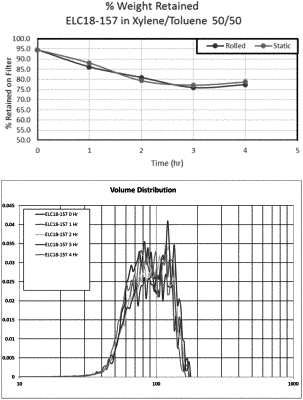| CPC C09K 8/502 (2013.01) [C09K 8/516 (2013.01); C09K 8/565 (2013.01); E21B 33/13 (2013.01); E21B 37/06 (2013.01); E21B 37/08 (2013.01); E21B 47/06 (2013.01)] | 16 Claims |

|
1. A composition for temporarily blocking fluid flow between conductivity zones comprising:
a plurality of particles having at least one measurable dimension between 2 and 1,000 μm, wherein the particle comprises a core and a protective coating material surrounding the core, wherein the core comprises a polymer selected from polycaprolactone (PCL), poly (lactic-co-glycolic acid) (PLGA), and poly-lactic acid (PLA), and pores that reduce the particles' density, and the coating material comprises silica; and
a solvent comprising one or more of toluene, xylene, hexane, and benzene.
|